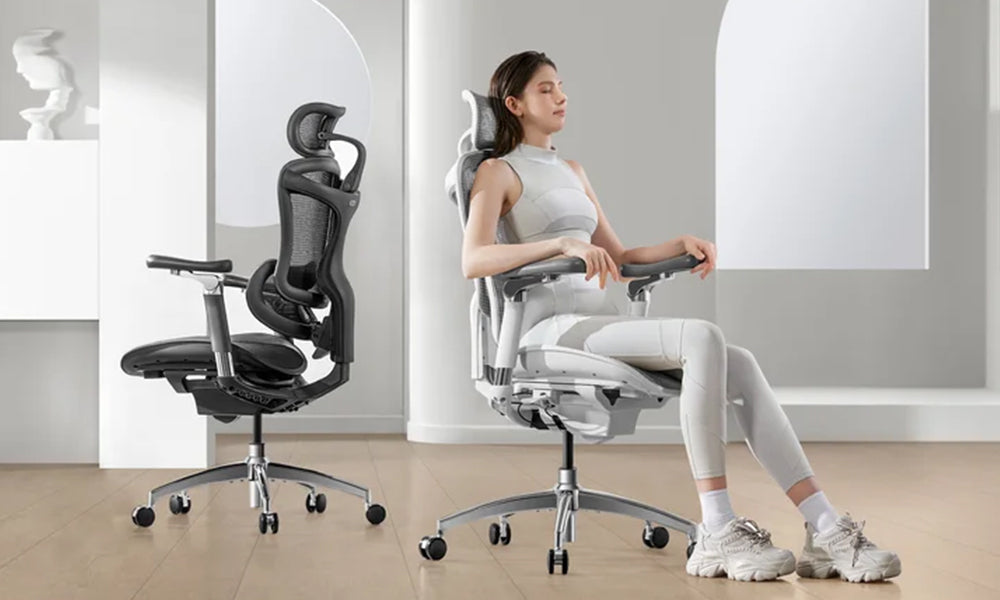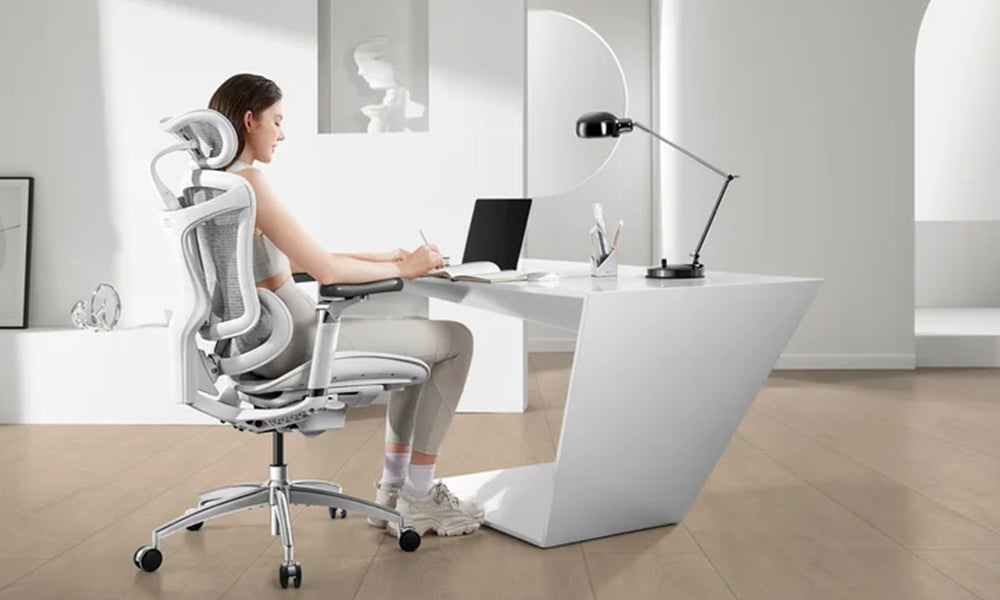Heart disease is a leading cause of death worldwide, claiming millions of lives each year. The modern sedentary lifestyle, characterized by prolonged sitting and lack of physical activity, has been identified as a significant risk factor for developing cardiovascular diseases. As people spend a large portion of their day sitting at desks, especially in office environments, the interest in adjustable standing desks has surged. But can these desks actually help mitigate the risks associated with heart disease? In this blog post, we will explore the potential benefits of adjustable standing desks in the context of heart health, examine the scientific evidence, and provide practical tips for integrating standing desks into your daily routine.
The Link Between Sedentary Behavior and Heart Disease
Sedentary behavior, defined as any waking activity characterized by low energy expenditure (e.g., sitting or lying down), has been linked to numerous health problems, including obesity, diabetes, and cardiovascular diseases. Studies have shown that prolonged sitting can negatively impact blood flow, increase insulin resistance, and promote the accumulation of fat around vital organs. These factors collectively contribute to the development of heart disease.
- Reduced Physical Activity: Sitting for long periods reduces the amount of time spent in physical activity, which is crucial for maintaining cardiovascular health. Regular movement helps improve blood circulation, regulate blood pressure, and reduce cholesterol levels.
- Weight Gain and Obesity: Extended periods of inactivity can lead to weight gain and obesity, both of which are major risk factors for heart disease. Excess body weight strains the heart and contributes to conditions like hypertension and high cholesterol.
- Metabolic Syndrome: Prolonged sitting is associated with an increased risk of metabolic syndrome, a cluster of conditions including high blood pressure, elevated blood sugar levels, excess body fat around the waist, and abnormal cholesterol levels. These conditions significantly elevate the risk of heart disease.
The Role of Adjustable Standing Desks
Adjustable standing desks, also known as sit-stand desks, are designed to allow users to alternate between sitting and standing positions throughout the day. The concept is simple: by reducing the amount of time spent sitting, individuals can engage in more movement and potentially reduce the health risks associated with a sedentary lifestyle. But how exactly do adjustable standing desks contribute to heart health?
Improved Cardiovascular Function
Standing, as opposed to sitting, engages more muscles in the body, which helps improve circulation and prevent blood from pooling in the lower extremities. This enhanced blood flow can reduce the risk of developing deep vein thrombosis (DVT) and other circulatory issues. Moreover, standing and moving more frequently can help maintain healthier blood pressure levels and improve overall cardiovascular function.
Weight Management
Using an adjustable standing desk encourages more movement and can increase daily caloric expenditure. While standing burns more calories than sitting, the real benefit comes from the ability to incorporate light activities, such as stretching or walking, into the workday. Over time, these additional activities can contribute to weight loss or weight maintenance, reducing the strain on the heart and lowering the risk of heart disease.
Lowered Blood Sugar Levels
Research has indicated that breaking up long periods of sitting with standing or light activity can help regulate blood sugar levels, particularly after meals. This is crucial for reducing the risk of type 2 diabetes, a significant risk factor for heart disease. One study published in the journal "Diabetes Care" found that alternating between sitting and standing every 30 minutes reduced blood sugar spikes by 11.1% compared to uninterrupted sitting.
Improved Cholesterol Levels
Regularly using a standing desk can positively influence cholesterol levels. Increased movement helps boost levels of high-density lipoprotein (HDL) cholesterol, often referred to as "good" cholesterol, while reducing levels of low-density lipoprotein (LDL) cholesterol, or "bad" cholesterol. Healthy cholesterol levels are essential for reducing the risk of atherosclerosis, a condition characterized by the buildup of fatty deposits in the arteries, which can lead to heart attacks and strokes.
Scientific Evidence Supporting Standing Desks
Several studies have examined the health benefits of standing desks and their impact on cardiovascular health. Here are a few key findings:
- Reduction in Sedentary Time: A study published in the "British Journal of Sports Medicine" found that employees who used sit-stand desks reduced their sitting time by an average of 84 minutes per day. This reduction in sedentary time is associated with improved metabolic health and reduced cardiovascular risk factors.
- Increased Physical Activity: Research published in the "Journal of Physical Activity and Health" showed that standing desks can increase the amount of light physical activity during the workday. Participants using standing desks reported feeling more energetic and engaged, which can contribute to overall better health and well-being.
- Health Outcomes: A comprehensive review in the journal "Sports Medicine" highlighted that interventions aimed at reducing sitting time, including the use of standing desks, have positive effects on various health outcomes, including body composition, metabolic markers, and cardiovascular health.
Practical Tips for Using an Adjustable Standing Desk
While the benefits of adjustable standing desks are evident, it is essential to use them correctly to maximize their positive impact on health. Here are some practical tips for integrating a standing desk into your daily routine:
- Gradual Transition: If you are new to using a standing desk, start by standing for short periods and gradually increase the duration. Aim for a balance between sitting and standing, such as 30 minutes of standing every hour.
- Proper Ergonomics: Ensure that your standing desk is set up ergonomically to avoid strain on your back, neck, and wrists. Your computer screen should be at eye level, and your keyboard should be at a comfortable height to maintain a neutral wrist position.
- Footwear and Flooring: Wear comfortable shoes and consider using an anti-fatigue mat to reduce discomfort and provide support while standing. This can help prevent foot and leg pain.
- Movement Breaks: Take regular breaks to move around, stretch, or perform light exercises. Incorporate activities like walking meetings or short strolls during phone calls to increase your daily physical activity.
- Listen to Your Body: Pay attention to how your body feels and make adjustments as needed. If you experience any discomfort or pain, reassess your desk setup and consult a healthcare professional if necessary.
Conclusion
In conclusion, adjustable standing desks offer a promising solution for reducing the risks associated with prolonged sitting and sedentary behavior. By encouraging more movement and providing the flexibility to alternate between sitting and standing, these desks can help improve cardiovascular health, manage weight, regulate blood sugar levels, and enhance overall well-being. While they are not a standalone solution for preventing heart disease, they can be an effective component of a comprehensive approach to a healthier lifestyle.
Adopting an adjustable standing desk, combined with regular physical activity, a balanced diet, and other heart-healthy habits, can contribute significantly to reducing the risk of heart disease. As always, it is important to consult with healthcare professionals before making significant changes to your work environment or lifestyle, especially if you have existing health conditions. Embrace the potential benefits of standing desks and take proactive steps towards a healthier heart and a more active life.



